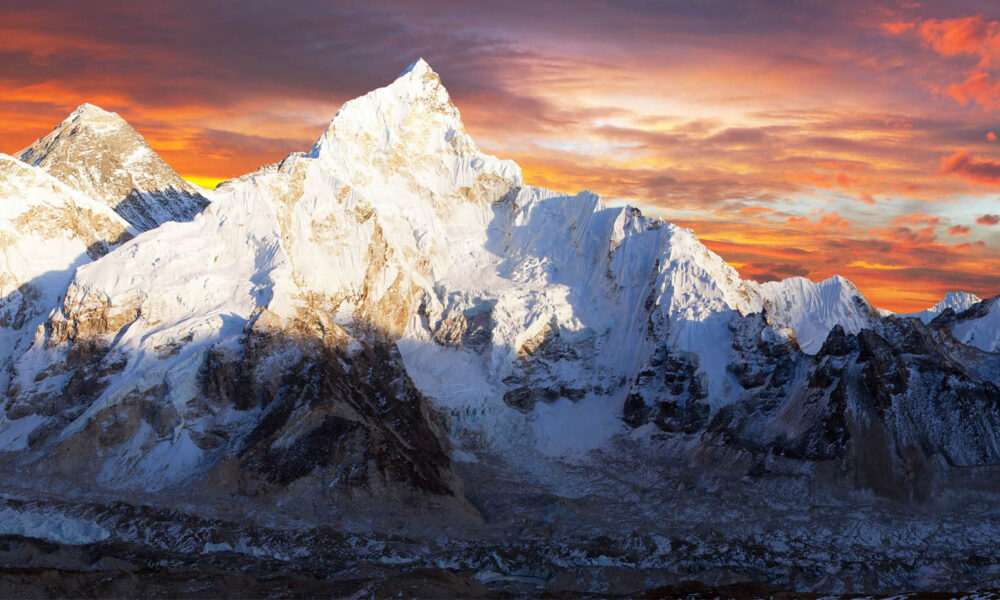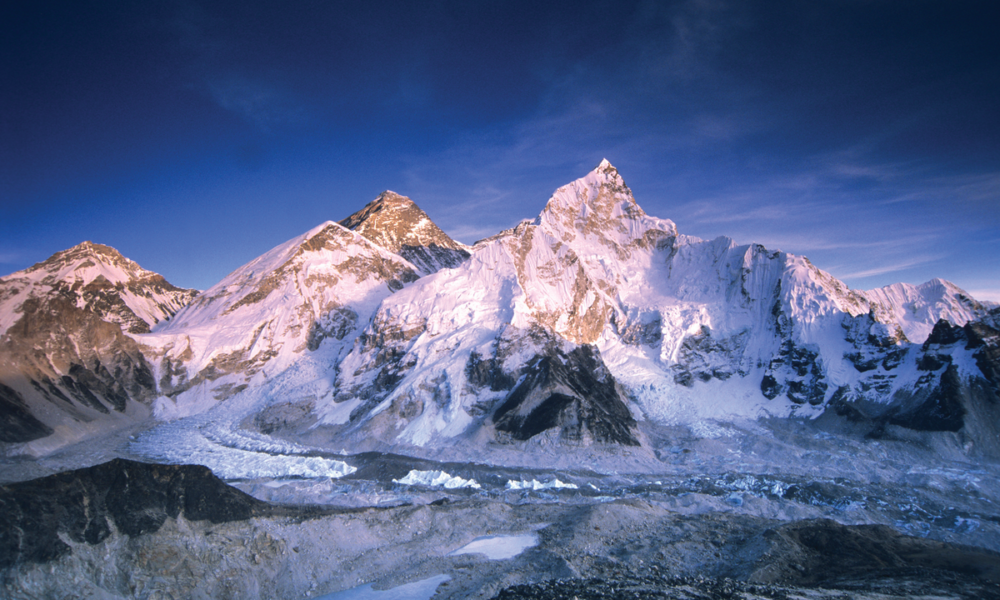
Mount Everest, the tallest mountain in the world, stands majestically at the border of Nepal and China, reaching a staggering height of 29,032 feet (8,848 meters) above sea level. Its summit is the highest point on Earth, and scaling its formidable heights has been a dream and a challenge for mountaineers from around the globe.
The journey to the top of Everest is not only a physical test but also a mental and emotional one. The mountain has a rich history, deeply intertwined with the human spirit’s relentless pursuit of conquering the seemingly unconquerable. The geological story of Everest is as fascinating as its summit is daunting.
Situated in the Himalayan range, Everest was formed millions of years ago as the Indian and Eurasian tectonic plates collided. This collision led to the uplift of the Himalayas, and Everest emerged as the jewel in this crown of towering peaks. The mountain’s name, “Everest,” was bestowed in 1865 in honor of Sir George Everest, the British surveyor general of India.
The trek to Everest’s base camp, situated at an altitude of around 17,600 feet (5,364 meters), is an adventure in itself. Trekkers navigate through picturesque landscapes, passing through remote Sherpa villages and dense forests, gradually acclimatizing to the increasing altitude. The base camp serves as a staging point for the ascent, with climbers spending weeks acclimatizing and preparing for the challenging climb ahead.
The route to the summit is known as the Southeast Ridge, and it begins at the Khumbu Icefall, a treacherous and ever-shifting glacier. Climbers navigate through towering ice seracs and deep crevasses, overcoming the inherent dangers of this icy labyrinth. Sherpas, the indigenous people of the region, play a crucial role in supporting climbers, carrying equipment, setting up camps, and guiding them through the perilous terrain.
As climbers ascend beyond the icefall, they encounter the Western Cwm, a vast, glacier-covered valley that leads to the Lhotse Face. The Lhotse Face is a steep ice wall that demands technical skill and endurance. Camps are strategically set up along the route, providing necessary rest and acclimatization.
The South Col, located at approximately 26,000 feet (7,925 meters), serves as the final camp before the push to the summit. Climbers face the daunting challenge of the “Death Zone” above 26,247 feet (8,000 meters), where oxygen levels are critically low, and the human body’s ability to function is severely compromised.
The ascent from the South Col involves negotiating the Southeast Ridge, battling bitter cold, high winds, and the ever-present risk of avalanches. The Hillary Step, a vertical rock wall, poses a final obstacle before reaching the summit. Climbers must carefully navigate this technical section before stepping onto the rooftop of the world.
Reaching the summit is an overwhelming achievement, a moment of triumph against nature’s most formidable forces. The view from the top is unparalleled, offering a panorama of jagged peaks, deep valleys, and the curvature of the Earth. However, the descent is equally perilous, and many accidents occur during this phase of the climb.
Everest’s allure goes beyond the physical challenge; it is a symbol of human tenacity, pushing the boundaries of what is possible. The mountain has witnessed triumphs and tragedies, with stories of heroic ascents and heartbreaking losses etched into its slopes. The legendary Sir Edmund Hillary and Tenzing Norgay made history in 1953 as the first to reach the summit, paving the way for future generations of climbers.
In recent years, Everest has faced environmental challenges, including the impact of climate change and the accumulation of waste left by climbers. Efforts are underway to address these issues and ensure the mountain’s preservation for future adventurers.
Mount Everest stands as a testament to the indomitable human spirit and the quest for exploration and achievement. Climbing its heights is a journey that demands courage, resilience, and a deep respect for the natural forces that shape this majestic peak. As long as there are dreamers and adventurers, Everest will continue to captivate and inspire, beckoning those who seek to test their limits on the roof of the world.




